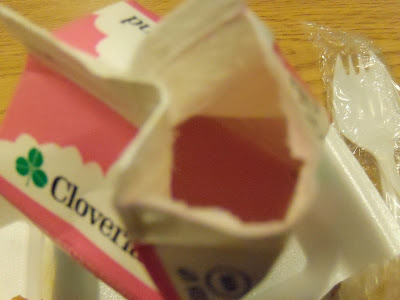By Nancy Piho
My interest in testifying in support of this bill stems from several positions: my twenty-year involvement in the food marketing industry, my authorship of the new book, “My Two-Year-Old Eats Octopus: Raising Children Who Love to Eat Everything,” which focuses on the importance of teaching young children to appreciate the taste and flavor of various foods, and, most important, my role as a citizen of the District of Columbia and the mother of two young boys, ages five and two.
While there are many aspects of this bill that are important, I focus my testimony on five specific points that I believe are key components, as they are all currently under-recognized issues that could play a significant role in encouraging our children to eat more healthful diets. I think we all agree that that is an admirable goal.
First, the bill requires that 30 minutes be allotted each day for children to eat their lunch. While this may sound insignificant to some, or even like a waste of time, I found in the two years that I researched my book that experts are in complete agreement on this issue. Sitting down, focusing on eating and the food being consumed, is a critical step in teaching children to place value on their diets and what they eat. We are all most likely guilty of too much “eating on the run,” often with negative consequences to our health. This is an opportunity for schools to instill better habits in our kids.
Second, there is a financial incentive for schools to provide locally-sourced foods at school meals. While there are numerous environmental and nutrition reasons to support this, I add to the discussion another important factor to consider, and that is the issue of the TASTE of the foods involved. There is no question that foods that are subject to the shortest amount of time between harvest and consumption, and those that have to travel the fewest miles to the table, are fresher, and therefore superior in quality and flavor. Even young children can be taught to appreciate this difference.
Third, I support the fact that the bill introduces children to the concept of school gardens. Numerous studies, and many parents, including our First Lady Michelle Obama, will tell you that children who are personally vested in growing or cooking their foods are more receptive to eating them.
Fourth, the language in the bill defines “unprocessed” foods not only as those that contain no chemical additives, further processing or are in some way manufactured, but as those that are unnecessarily chopped, peeled, cut or in other ways altered from natural form. The inclusion of this detailed language in the bill is important in educating children about food, and even in preventing “Picky Eating.” Learning to appreciate the perfect flavor of unaltered food products – such as a whole apple, versus canned applesauce or packaged apple slices, and oranges versus orange juice – goes a long way towards teaching children that foods do not have to be “processed” to make them acceptable to the palate.
And finally, the bill establishes a requirement that any foods marketed through the schools, including those that supply materials to classrooms, must meet specific nutritional guidelines. I write extensively in my book about the blatant commercialization and rampant advertising of unhealthful food products that takes place in most public school systems across the country, with no regulation and often without parental knowledge or approval. I am proud to think that DC could be a leader in putting a stop to this.
My one concern about this bill, based on some knowledge of our bureaucratic ways, is that it may impose so many regulations that it will dictate that only large agri-businesses with adequate staffing to plow through red tape will be able to comply. I advise those who would be in charge of administering this bill to be cautious of this.
To those who question the cost and efforts needed to accommodate the provisions of this bill, I would say that this is simply a question of our priorities as citizens of this city. Are we content to just go along with the sub-par norms followed by school districts in many cities? Or do we want to be leaders in a movement to better educate our kids about the importance of the choices they make about what foods they eat? Do we want to create excellence and expectations in this area, which will then lead to excellence in other facets of our educational system? Don’t we all know that investing in quality products today will reap benefits down the road?
Our DC public schools can and should play an important role in not only in providing a nutritionally sound diet, but also in educating children about foods. For many of our children, school provides two of the three meals that they may eat in a day. Lessons learned and habits developed here are life long, and may have the further effect of influencing parents and other family members.
Nancy Piho is a D.C. parent and author of the book, My Two-Year-Old Eats Octopus: Raising Children Who Love to Eat Everything.
ゼファルリンの正しい飲み方
9 years ago











